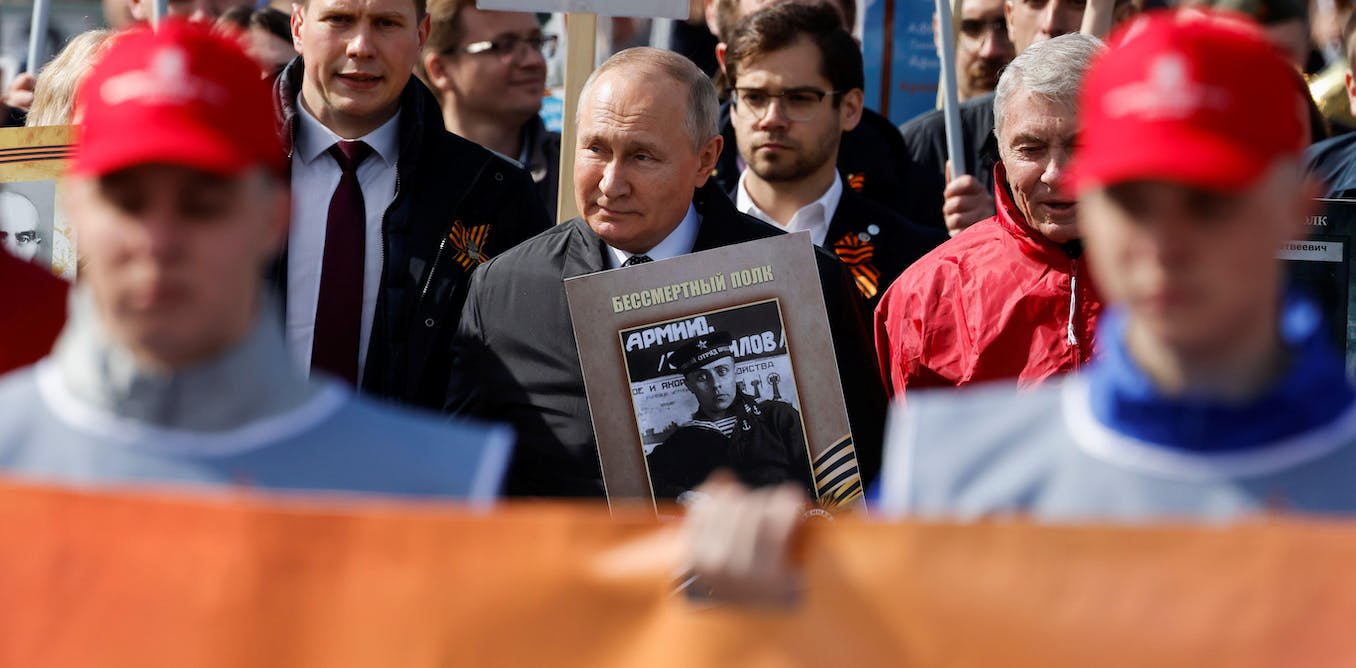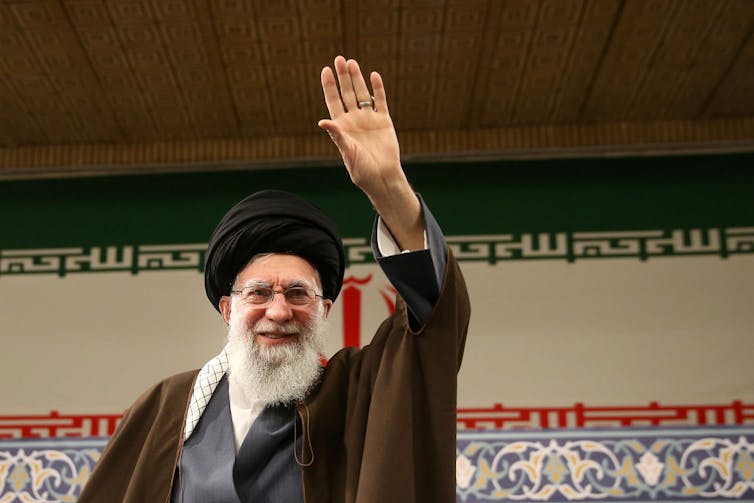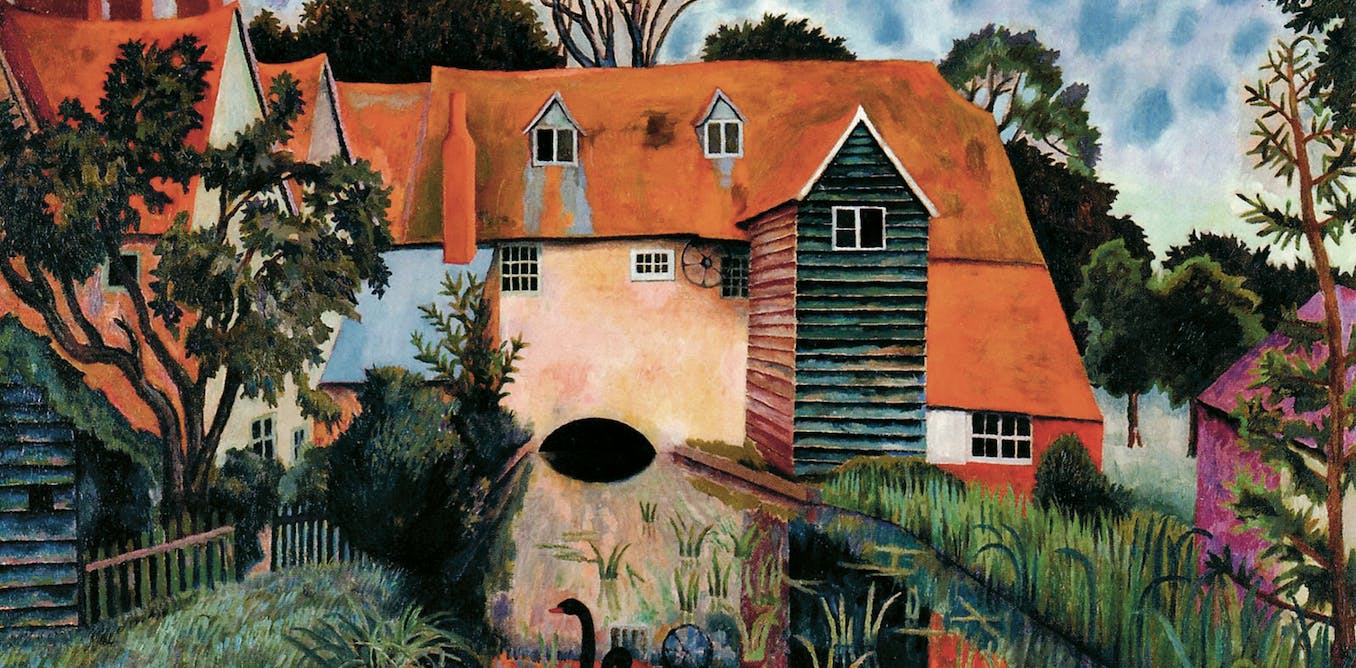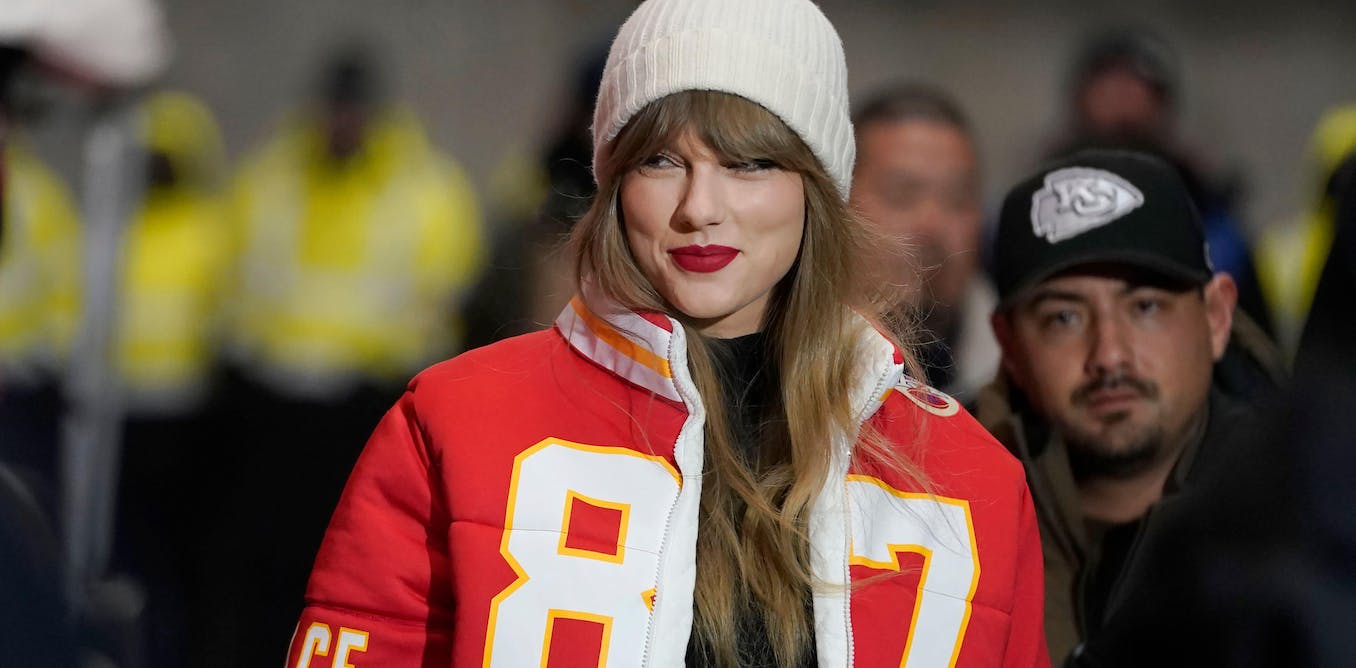Russians celebrate the end of the “great patriotic war” on May 9 each year. Victory Day, which commemorates the defeat of Nazism in Europe is the most important holiday in Russia.
The public and the state come together in a patriotic celebration during which people remember their family members who sacrificed their lives to defeat Nazism. Many of the day’s features – the parades, songs and commemorative practices – date back to the Soviet era.
But this year’s celebrations will be scaled down. In several regions, including Crimea and the Kursk and Belgorod oblasts that border Ukraine, the traditional military parades will not take place at all. The most striking change is the cancellation of the “Immortal Regiment” marches, which have been the centrepiece of civic commemorations of Victory Day over the past ten years.
The Soviet Union sustained the biggest losses during the second world war, with roughly 27 million soldiers and civilians left dead and many cities levelled to the ground. Across the vast Soviet empire, there was scarcely a household left untouched by the war.
In the first post-war decades, May 9 was a regular working day when families and military units quietly came together to remember and mourn their dead. The day only became an official public holiday in 1965 on the 20th anniversary of Germany’s surrender in Europe. That year, the Victory Day parade was held on the Red Square in Moscow for first time since 1945.
This marked the beginning of the cult of the great patriotic war. In the following years, massive war memorials were erected throughout the Soviet Union. May 9 became a day of public celebrations, family outings, concerts and fireworks – all broadcast on national television.
Private practices, such as visiting cemeteries or giving flowers to war veterans, were incorporated into official events. Still, many people continued to commemorate the war among family, friends and comrades in arms. Military parades remained reserved for special anniversaries until the USSR’s collapse.
Victory Day was the only major public holiday that made the transition to post-Soviet Russia. In a country that lost many of its idols and heroic achievements with the dissolution of the Soviet Union, triumph over Nazism remained a source of enormous collective and personal pride.
Filling the void left by discarded Soviet holidays, May 9 celebrations expanded and grew more lavish, especially after Vladimir Putin became president. Significantly, the tone of Victory Day events also gradually shifted over the years.
Soviet era commemoration focused on the promise of peace and the duty to prevent another war. In the Putin era – especially after the 2014 occupation of Crimea – Victory Day foregrounds readiness to fight to protect the motherland and the value of self-sacrifice.
March of the Immortals
The Immortal Regiment marches show that – for many Russians– Victory Day still holds enormous personal significance, associated with their family history.
In 2012, three journalists from a local TV station in the city of Tomsk in Siberia invited residents to take part in a parade carrying pictures of family members who participated in the war. They could have contributed in any capacity – armed forces fighters and service personnel, partisans, home-front workers, and more.
Thousands of people showed up to the Tomsk march that year and it received huge coverage in regional and national media. The following year, Immortal Regiment marches were organised in many Russian cities, as well as in Ukraine, Kazakhstan and Israel. By 2016, Immortal Regiment events spanned the globe.
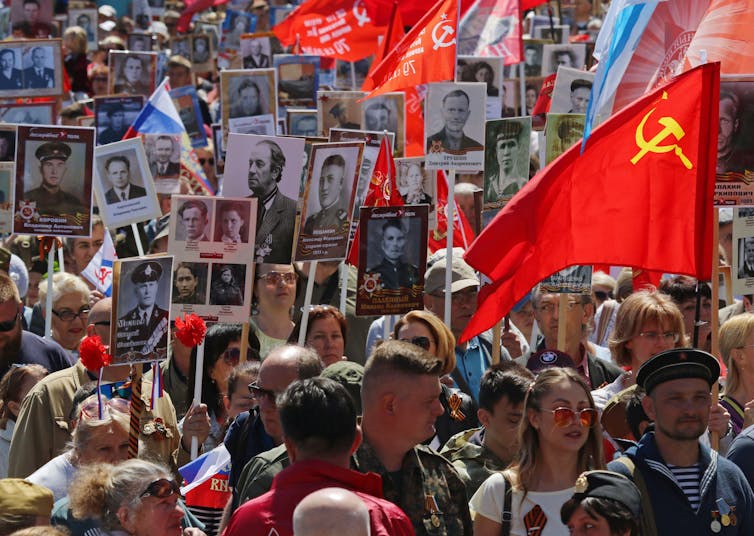
REUTERS/Alexey Pavlishak
Sensing a successful popular initiative, the state moved in and took over organisation of the Immortal Regiment and its publicity. In 2015, Vladimir Putin led the Immortal Regiment parade on the Red Square in Moscow, holding a photo of his father, who fought in the war. Putin has subsequently marched in the parade each year.
In 2022, two and a half months after the Russian invasion of Ukraine, Immortal Regiment events took place all over the country and, once again, Putin led the procession in Moscow. So what changed in 2023?
Controlling the message
Interestingly, official announcements do not say that the Immortal Regiment is “cancelled” but rather running in “a different format”. Instead of marching, citizens are invited to display portraits of their dead relatives in the windows of their cars and homes and social media profiles.
Russian official media explain the scaling down of celebrations in pragmatic terms, citing potential “provocations” and “terrorist attacks”. But for Putin’s opponents, the decision has been greeted with a degree of derision.
Mark Hertling, former commanding general of the US army in Europe, tweeted: “Nothing says you’re a grand strategist quite like not having enough soldiers and equipment to hold an annual parade.” And, with the looming prospect of a Ukrainian counter-offensive, the usual grand display of its military hardware would be a challenge.
But the real reason probably has to do with controlling the official narrative of the war. Russian propaganda has deliberately linked the great patriotic war to the “special military operation” in Ukraine. So the message of Victory Day celebrations must be carefully controlled and curated.
Since Putin announced the “general mobilisation” last September, the toll of fighting in Ukraine expanded beyond private military contractors and regular troops and is now shouldered by more and more families.
This is especially the case for some of the republics far from Moscow, from where a large proportion of the conscripts have been drafted. Their personal experiences and losses make the Kremlin’s official narrative of a successful “military operation” harder and harder to maintain.
The nature of Immortal Regiment events makes them ideal for spontaneous anti-war protests challenging official propaganda. The last thing the Kremlin wants is for large numbers of people to turn up holding pictures of their loved ones killed in Ukraine.

